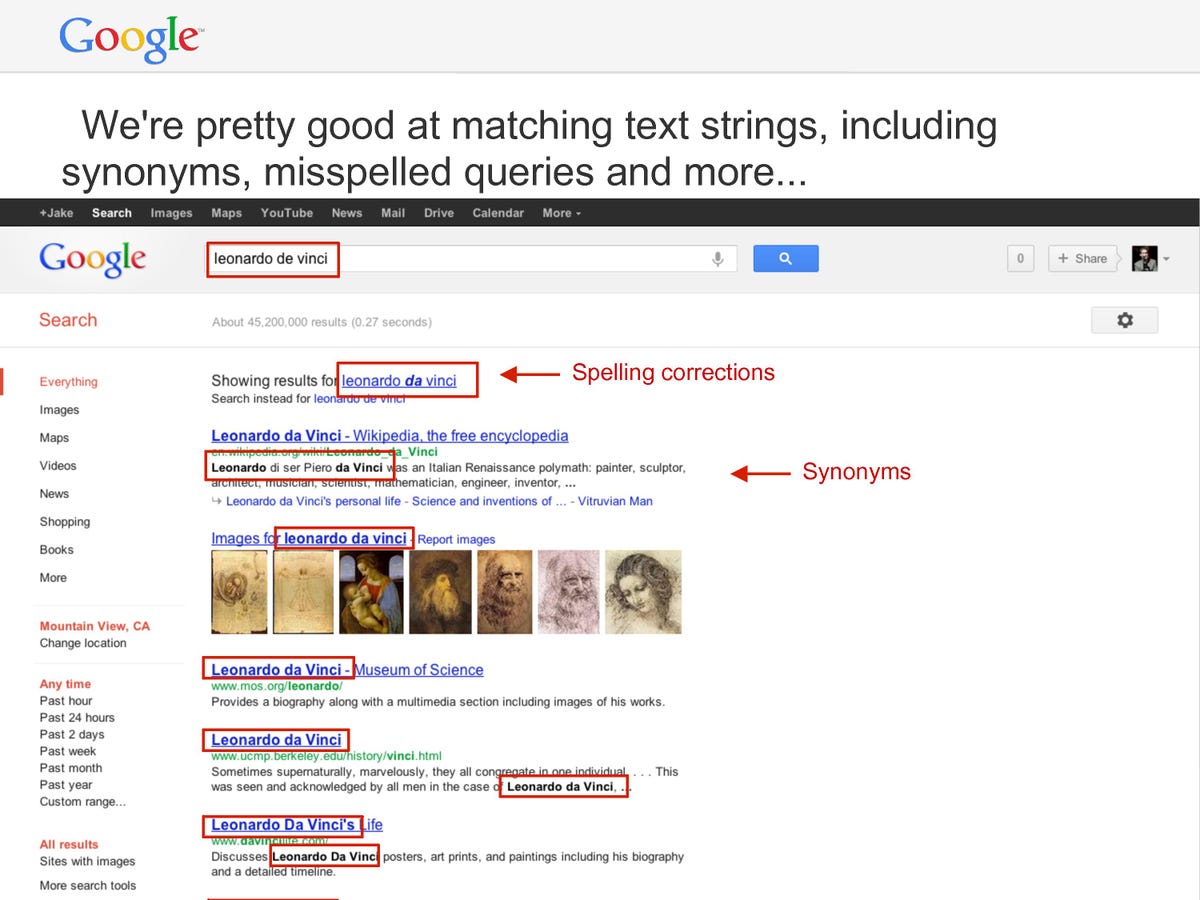Google's walk-through of Knowledge Graph
Google has created a 500-million-item database of people, places, and things. The results of the effort will start appearing today in search, offering encyclopedic capsules of information on topics.

The search engine problem: Lack of 'knowledge'
These screenshots are from Google's press materials announcing the project, called the Knowledge Graph.
By way of introduction, Google points out that the current search engine is quite good and finding results even if the query is spelled wrong. But the results could be better.
Queries can be ambiguous
A search for "Kings" can refer to one of two sports teams, or a TV show. Google currently will find results that match all of these, even if you know that you're looking for only one.
Google is building an ontology of things
This promotional slide simply illustrates the point that Google has built a rich data set that understands the nouns that people search for. The company uses both human and algorithms to categorize things.
Knowledge Graph lets you refine results
The Knowledge Graph knows which bucket a thing goes in to. It knows that one result for "Kings" may refer to the hockey team but another refers to the TV show. So Google will know ask you which you are looking for to help you see just the results relevant to you.
One refined, results are more targeted
The idea is to not litter your search results page with items you categorically don't care about.
Another example of refining a search
Names are reused a lot in language, and Google now knows the difference between things with the same name.
Yet another example of refining
The Knowledge Graph meets Google's synonym finder in this example, giving you a chance to select the constellation Ursa Major when you search for Great Bear.
Knowledge boxes appear when Google has a dossier on a subject
Dossiers on things (or people) appear when Knowledge Graph knows the topic in depth. Information is pulled from a variety of sources, including open ones like Wikipedia, and some data sets that Google says it pays for.
Summaries can be highly topic-sensitive
Not all people get the same treatment in a dossier. For example, Google here deems that a in the box for astronaut Elleen Collins, showing cumulated time in space is important enough to list. Musicians may get a list of tour dates.
Summaries link to other summaries for going deeper...
You can go down a rabbit hole of Knowledge Graph data if you like. Google believes that this activity will actually lead to more traffic to Web pages, since users will be able to find the data points they want to dwell on more quickly.
...or for exploring parallel topics
Knowledge Graph is also useful for "more like this" searching.
Did you know Matt Groenig's parents were named Homer and Margaret?
Google says that its clever dossiers will lead people to discover interesting facts that might otherwise have been buried.
Users can report errors
Not everything in the Knowledge Graph will be accurate. It takes only two clicks, Google says, to report an error. The search company is working on methods to send corrections back to the originating source sites.

